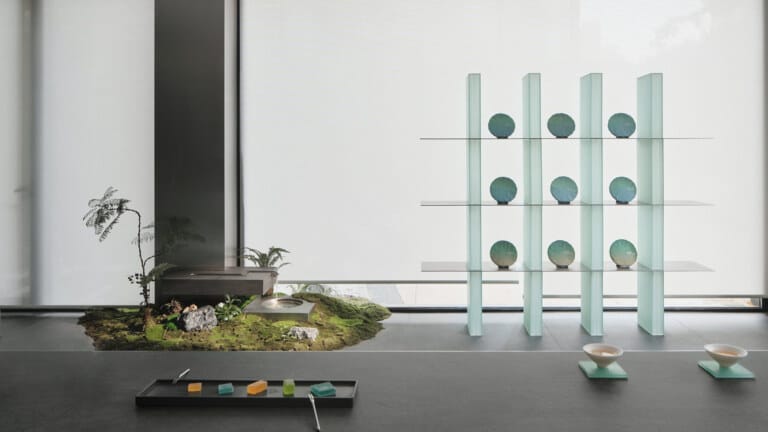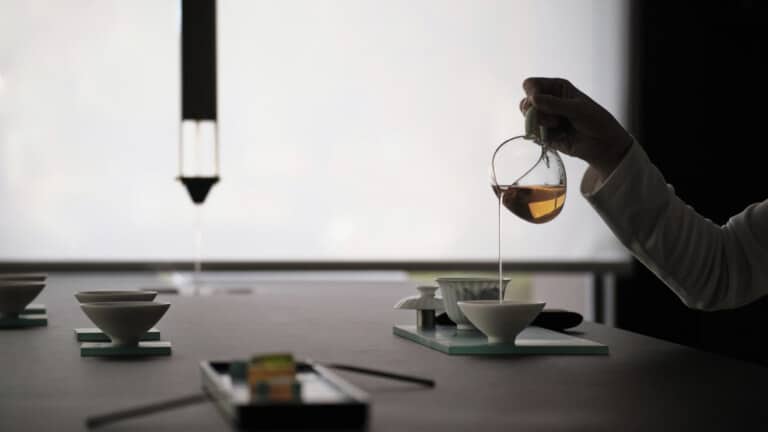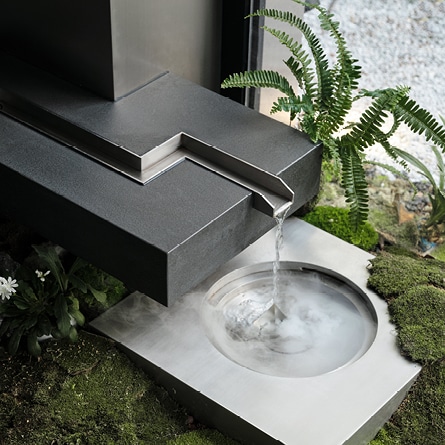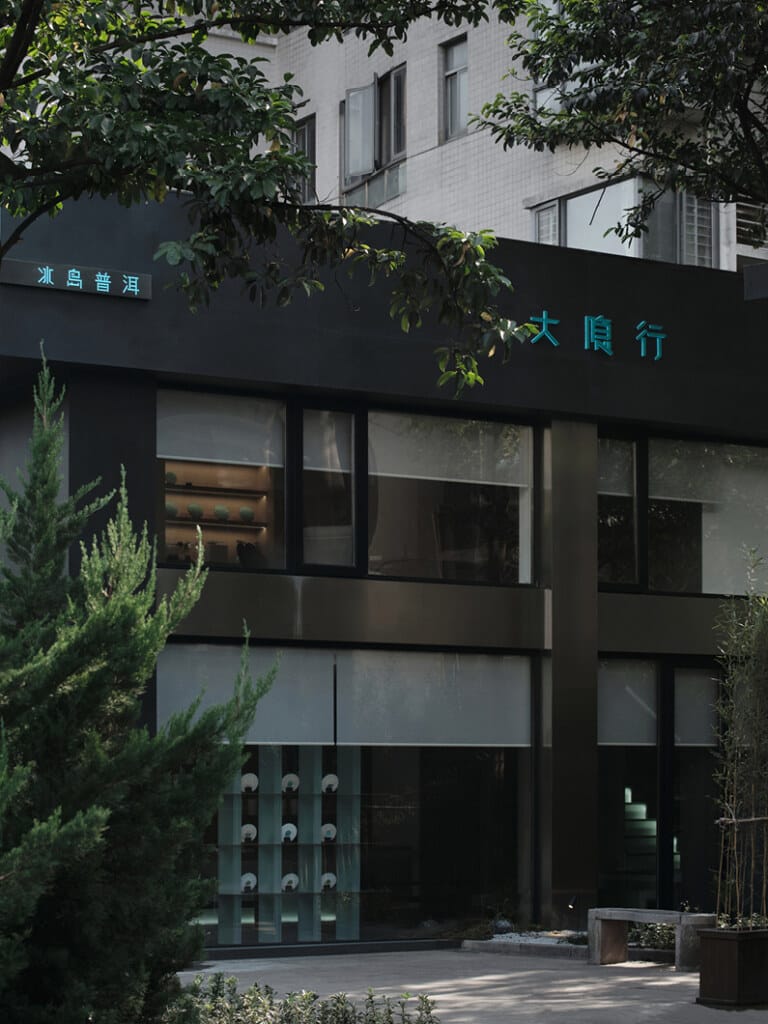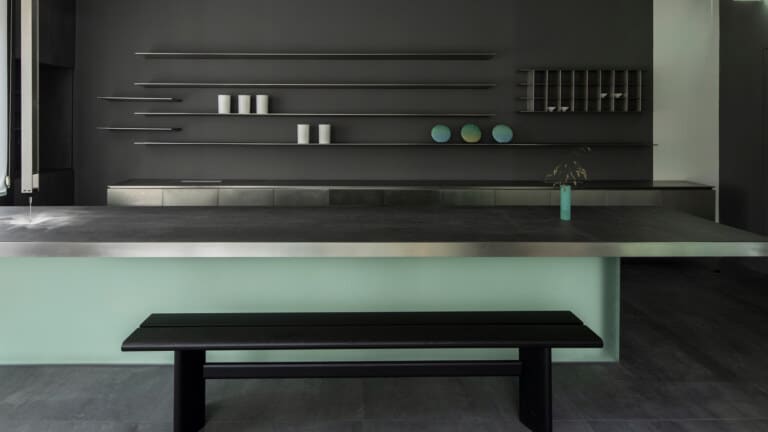1 finish, 4 sizes
Collection Calce
The Chinese tea ceremony – Gong fu cha – expresses the history and philosophy of the country like no other tradition. It made its first appearance during the Tang Dynasty, over 1,000 years ago, when tea was used by monks in Buddhist temples for healing purposes. Today, this is a very widespread tradition, a social and spiritual ritual that goes beyond mere beverage preparation and takes on the form of a veritable cultural activity.
This is demonstrated by the very words used by the Chinese people to identify this art: the expression “Gong fu cha” can be translated as “making tea care and attention”. Indeed, while “Cha” has the ambivalent meaning of “tea” and “harmony between man and nature”, “Gong fu” refers to the semantic areas of time, care, and commitment. It’s not just about making tea, but rather making it the right way. The ceremony therefore takes the form of a suggestive, refined ritual, comprising a specific sequence of steps handed down from one generation to the next, from the choice of materials to the choice of objects, from making the beverage to serving it and tasting it. It is an aesthetic and introspective ritual which – according to Zen literature – requires respect for others and for things, grace and harmony, simplicity and candour, peace and solitude. Laminam has taken its collections into a tea room in the heart of Shanghai, called Da Yin Hang Tea Space, thereby participating in the scenery of an age-old ritual which has increasingly become a means of communication and meditation.
When it comes to tea rooms, popular imagination conjures up large cabinets, generously-sized display cases, long solid wood tables and traditional Chinese signs clearly visible on the walls, tables and floors.
Da Yin Hang redefines this space, waiving the more commercial elements in favour of a simple and understated style, mirroring the soul which has so much more to say.
The name “Da Yin Hang” in fact originates from the Chinese poem “Da Yin Bu Wang Shi”, a tribute to healthy detachment from the material things of reality, an invitation to low-profile living which keeps the world at a safe distance, while participating in certain social dynamics. Consequently, this tea room built on two floors in Shanghai reflects the heart of an experiential attitude in its moderate design.
Designed on two levels – the ground floor, for tea drinking and product display and the first floor for private use – the space is primarily defined by an impressive five metre-long table which literally crosses indoor boundaries.
Contrary to the common use of wood, the table top is entirely clad with the Laminam I Naturali surface in the impactful Pietra di Savoia Antracite colour.
As an ambassador for a tactile and visual experience reminiscent of hand-worked stone, Pietra di Savoia Antracite is perfect for a more modern and fresh concept of traditional tea tables, as well as being ideal for use as a countertop owing to its resistance characteristics – to heat, to scratches, to the appearance of mould and mildew – and its easy cleaning.
In keeping with the soul-to-world dichotomy mentioned above, the table in Laminam, which incorporates a fountain whose jet ends up in the pool at the entrance, extends to the outside, through the window, almost as if the latter did not exist. It is a veritable invitation to enter, a dialogue between the inside and the outside which the entire Da Yin Hang embraces and voices. Indeed, the table that stretches outside to the road is met with a genuine green flowerbed that characterises a corner of the interior setting: the ”Me” and the “Them” that speak to one another, each one contaminating the other.
To achieve a coordinated image, Pietra di Savoia Antracite has also been used to clad the internal flooring of the tea room, creating chromatic and visual continuity interrupted solely by aqua green glass details, chosen as light points.
This particular shade of green which distinguishes the table base, the display shelves and the staircase was chosen for its potent evocative power. In addition to recalling the famous painting Qian Li Jiang Shan Tu (also known as “A Thousand Li of Rivers and Mountains”), by the young Wang Meng Xi at the tender age of 18 which immediately became a masterpiece of traditional Chinese culture, this colour brings to mind the variations in colour of the waters of Lake BingDao, one of the most popular attractions in the hometown of tea.
Laminam natural surfaces also clad the vertical walls of the tea room. These are distinguished by the Calce collection in Nero shade, one of the strongest colours in the range, inspired by the simplicity of a freshly-painted wall.
The design of Da Yin Hang utilises it both for its exterior façade as well as the internal cladding owing to its very stylish appearance, which is easily adaptable to different colour combinations. It is a versatile colour that clears the field for the most varied stylistic and design requirements.
For its application to the façade, Calce – like all Laminam collections – delivers superior technical performance levels, such as the maintenance of the original surface characteristics even in the event of exposure to high temperatures, frost and UV rays.
You are applying for the position of
You are sending a spontaneous application
